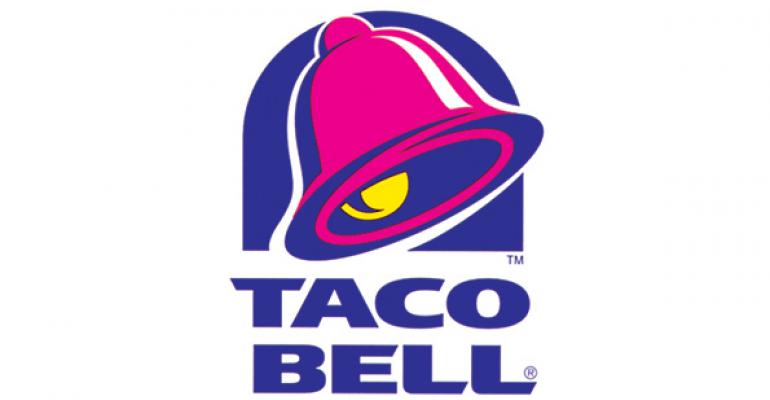Taco Bell is taking on China.
The Mexican quick-service brand, the only one of three Yum! Brands Inc. concepts that isn’t dotting the Chinese landscape, will open its first location in Shanghai by the end of this year, company executives said on Tuesday.
Speaking at the Bank of America Merrill Lynch Consumer and Retail Conference, Yum CEO Greg Creed said the brand has considerable potential in the country, where sister brands KFC and Pizza Hut have done well.
“This will be the beginning of what could be a huge potential idea for China,” Creed said.
Yum has built much of its business on international expansion. The company had 42,700 locations in its three brands, as of the end of 2015, and most of them are outside the U.S., including more than 6,700 units in China. Both KFC and Pizza Hut are major global brands.
Taco Bell is the exception. The vast majority of the concept’s 6,400 locations are in the U.S., and Yum would like to change that.
The brand accounted for 24 percent of Yum’s operating profit in 2015, an amount that will increase to about 31 percent once Yum’s China operations are spun off, expected by the end of the year.
Creed believes the brand has a lot going for it as it expands internationally. For one thing, people outside the U.S. “want to experiment with new food flavors and tastes,” Creed said.
In addition, the brand has high name recognition despite its poor presence in international markets. “When people visit the U.S., they usually go to New York or California,” Creed said. “And if they go to California, everybody knows Taco Bell. Aided brand awareness scores are quite high.”
There’s also the fact that both KFC and Pizza Hut have already blazed the international trail, which should help fuel Taco Bell’s growth.
“The world is our oyster,” Creed said. “We have to pace and sequence, but we have the supply chain in a lot of countries.” Taco Bell, he said, could “jump on the KFC-Pizza Hut bandwagon.”
Creed said that there is enthusiasm both in the U.S. and in China about Taco Bell’s ability to expand over there. And it’s a low-risk move.
“We’ll know quickly,” he said. “It’ll either work or it won’t work. And we won’t have to spend a lot of money to find that out.”
Creed covered some other topics during the 40-minute presentation Tuesday:
Making it easier
Pizza Hut has struggled in recent years, especially in its home market, even though consumers have been flocking to the chain’s rivals — notably Domino’s Pizza Inc. and Papa John’s International Inc.
Reversing that trend requires technology.
Creed noted that the brand is “the most trusted,” and “the most liked,” among pizza chains. “So why are we not the most bought?”
“At the moment, [Pizza Hut is] the brand we have to work on most from a brand point of view,” Creed said.
The key to changing that, he said, is to make the brand easier. “Easy beats better with Millennials,” Creed said. “We have to make it easier to get better pizza if we are to be successful at Pizza Hut.”
One way the company will do it is through a systemwide point-of-sale system, expected to be in place by the end of 2017, Creed said. He noted the company will have the technology to catch up with Domino’s, which has seen sales grow considerably recently due in part to the addition of technology to make it easy to order pizza.
As it is, Creed said, Pizza Hut is seeing some sales growth, due in part to the chain’s marketing and its value offers.
Pizza Hut’s 2-percent same-store sales growth in the fourth quarter was “not in the same league as Domino’s,” where same-store sales grew in the double digits, “but it’s the best in four years,” Creed said.
Pizza Hut is apparently besting that performance in the first quarter. Creed promised a “better first quarter” for Pizza Hut.
“We’re encouraged by the performance of the business, particularly in the U.S.,” Creed said.
Why China gets a deal
Yum is spinning off its China operations into a separate company. Most of the locations there are company owned. After the spinoff, Yum China will be a franchisee of what the company is calling “New Yum.”
Those restaurants will also get a deal on franchise royalties. The restaurants will pay 3 percent of revenues to Yum, compared with 6 percent for the rest of the system.
Creed explained that the deal was necessary to encourage growth in the country. “At 3 percent, with no external debt, they can still grow 600 to 700 a year, or more,” Creed said. “It’s an incentive for both of us to give them that license fee and structure to enable them to continue to grow or accelerate the rate they’re growing at.”
He also noted that, “essentially, this was our business.” Company executives have met with franchisees in other markets, and so far at least, “They completely understand what we’re trying to do.”
“No one is stomping his feet saying, ‘I’m paying 6 and China is playing 3,’” he said.
Contact Jonathan Maze at [email protected]
Follow him on Twitter: @jonathanmaze




